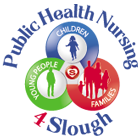AVOIDING SUFFOCATION, STRANGULATION AND CHOKING
Children can swallow, inhale, or choke on items such as small toys, peanuts, marbles and button batteries*
- Choose toys appropriate to the age of the child
- Ensure that small objects like coins or buttons are kept out of reach of children under three
- Pull-cords on curtains and blinds should be kept short and out of reach
- Keep plastic bags of all types including nappy bags out of reach and sight of young children so they can’t be played with
- Do not give peanuts to young children. They can cause an allergic reaction that can stop your child from breathing. Peanuts should not be given to children under the age of six
- Don’t leave any type of rope or cord lying around including dressing gown cords
- Keep garden play equipment well away from washing lines
Baby slings are a popular way to carry your baby for both convenience and the promotion of bonding. However there are some safety aspects which ROSPA advise need to be considered before their use in order to reduce any risk of suffocation. Babies do not have strong head control and their airway can easily become blocked if they are lying in a ‘C’ position (chin on chest).
How to Buy Safely
Choose a sling that is the right one for your baby’s size and ensure it keeps your baby’s head in an upright position so it supports your baby’s head.
There is currently no specific safety standard for baby slings, although they are still required by law to be safe.
How To Set Up Safely
The baby should be upright and not in the C position or curled position pushing the chin down to the chest as this can restrict their ability to breathe – always remember the T.I.C.K.S principle.
T – Tight This will mean your baby is supported and will be more comfortable for you. Any slack could mean your baby slumps and their airway can become restricted.
I – In view at all times. You should always be able to see your baby at all times. The fabric should not cover their face at all.
C – Close enough to kiss. When using a sling, your baby should be close enough for you to kiss their head. Their head should be as close to your chin as possible, and comfortable, for you.
K – Keep chin off the baby’s chest. A baby should never have their chin on their chest or be curled up as this can restrict their ability to breathe. Always ensure there is at least a finger’s width between your baby’s chin and their chest when using a sling.
S – Supported back Always make sure the sling supports their back, keeps them straight, and their tummy and chest should be against you. Again, if they are too loosely sat in the sling they can slump forward and restrict breathing.
RoSPA – Royal Society for the Prevention of Accidents
CAPT – Child Accident Prevention Trust

